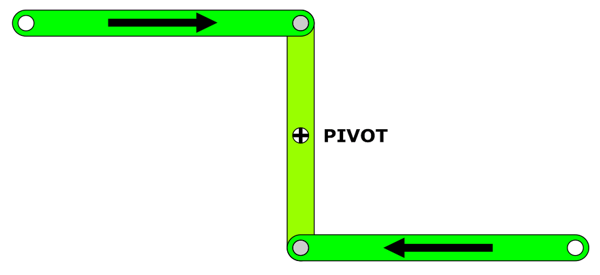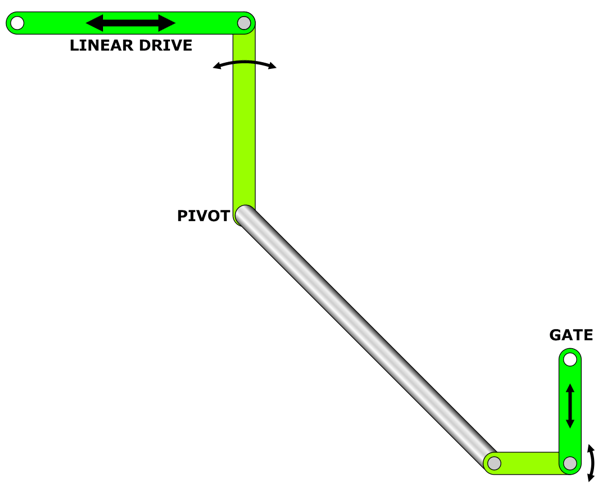Animation Fundamentals: Levers
Levers have been an important part of human life since our ancestors dwelt in caves. They're so important that they've become part of our language, as when you leverage an advantage, for instance. In model animation, they figure in a great many mechanisms in a great many different forms.
Levers reduce motion, increase motion, reverse motion, transfer motion, and any combination thereof; it's all down to how the pivot points are used. Here are some visual aids...

In the first example, the lever is pivoted at the bottom; input and output connections are made at two different points; the top one will move more than the other. Depending on which is used for what, this will either increase or decrease the amount of travel.

In the second example, the lever is pivoted in the middle; the motion of the respective components attached to it is reversed. If the two legs of the lever were different lengths, a change in the amount of travel would occur at the same time.

In the third case, motion is turned at right angles. Again, if the legs of the lever in the middle were two different lengths, the amount of travel would also change. If the lever here looks familiar, it appears as a cam follower; it's also commonly known as a bell crank.
Motion can be transferred at separate locations by a common means. Imagine a lever attached to each end of a rod; the motion at one end is then transferred to the other, and depending on the levers used, that motion can be increased, decreased, reversed, etc. This is how I made the crossing gates work on the Mountain Vista Railroad: the linear drive at one end raised and lowered the gate arms some distance away.

There's a lot going on here: The linear drive moves much more than the gate (the gate itself being a lever!), so the lever on the drive end is longer. Also, the respective levers are offset by 90 degrees, changing the direction of travel. This is a perfect example of just how complex simple levers can be, and this is still a relatively simple one. That rod between the levers, for instance, could have other levers attached to it, all performing different functions, all from a common drive.
I hope this helps inspire ideas how to accomplish interesting animation challenges.
